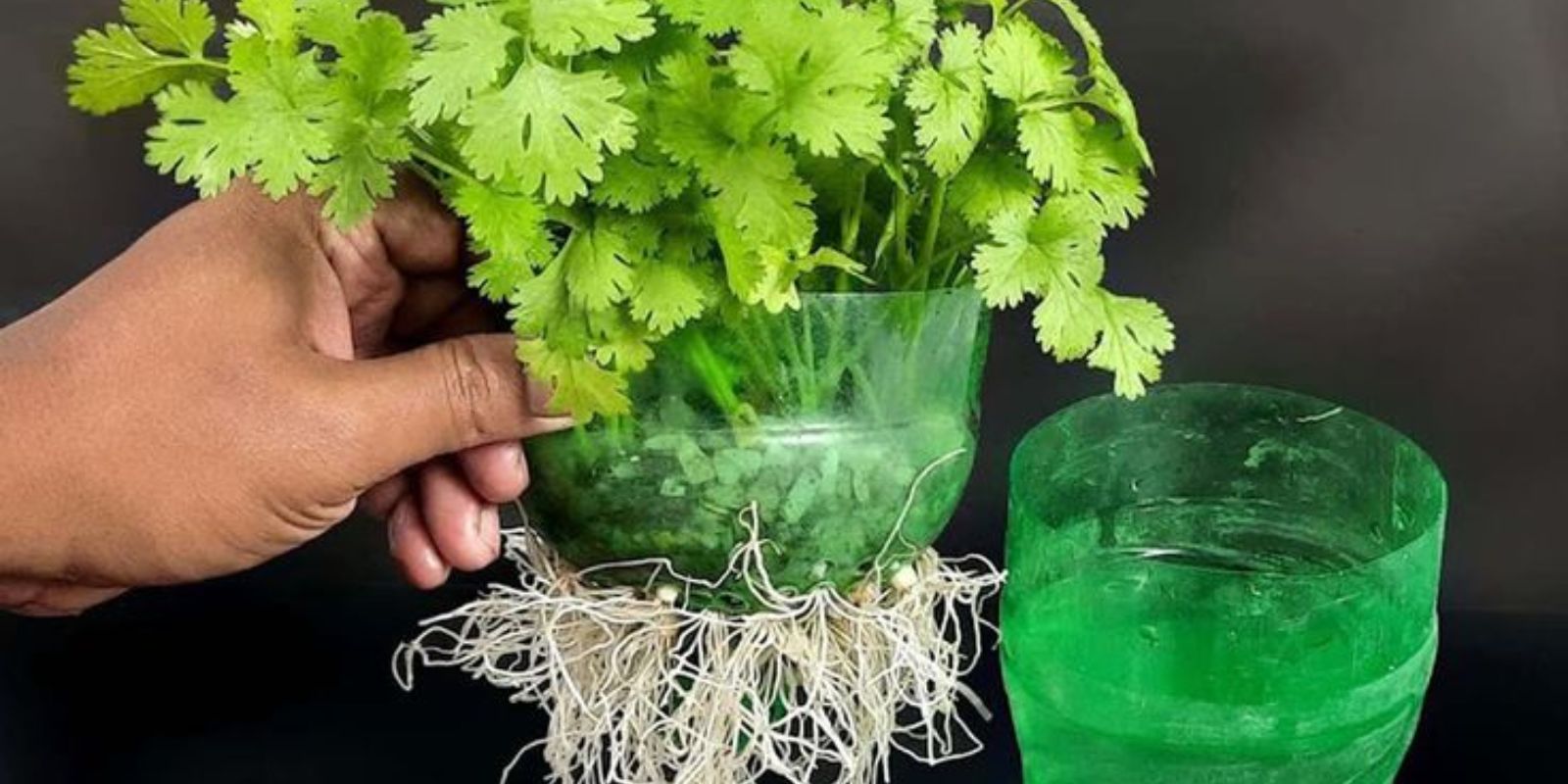Introduction
Coriander, also known as cilantro, is a versatile herb used in a wide range of cuisines for its distinctive flavor and aroma. Growing coriander at home can be a rewarding experience, and doing so in water offers a simple and convenient method to keep a fresh supply of this herb on hand. Whether you’re an experienced gardener or a beginner looking to enhance your cooking, this guide will walk you through the process of growing coriander in water, ensuring you enjoy fresh, flavorful herbs right from your kitchen.
Why Grow Coriander in Water?
Benefits of Water Cultivation
- Convenience: Growing coriander in water is a hassle-free way to cultivate herbs without the need for soil or complex gardening setups. It’s perfect for urban environments or small spaces.
- Freshness: Having a continuous supply of fresh coriander means you’ll always have the herb available for your recipes, reducing the need for frequent trips to the store.
- Visibility: Water cultivation allows you to monitor the plant’s growth closely and makes it easier to detect any issues such as root rot or pests.
Steps to Grow Coriander in Water
1. Select Fresh Coriander Stems
- Choose Healthy Stems: Start with fresh coriander stems that have healthy roots attached. You can use stems from a store-bought bunch or from your own coriander plant if you have one.
- Inspect for Quality: Ensure that the stems are free from disease or pests. Look for vibrant green leaves and firm roots.
2. Prepare a Container
- Choose the Right Container: Select a clean jar, glass, or vase with enough depth to hold the stems upright. The container should be large enough to accommodate the root system as it grows.
- Clean the Container: Thoroughly wash the container with soap and water to eliminate any residues or contaminants that could affect plant health.
3. Add Water
- Fill with Water: Pour water into the container, ensuring that the roots are submerged but the leaves are above the water level. Use room-temperature water to avoid shocking the plant.
- Consider Water Type: If possible, use filtered or distilled water to avoid chlorine and other chemicals that can harm the plant.
4. Place in Light
- Find a Sunny Spot: Position the container in a bright, sunny location such as a windowsill that receives at least 4-6 hours of sunlight each day. Coriander thrives in bright, indirect light.
- Avoid Direct Sunlight: While coriander needs plenty of light, avoid placing the container in direct, intense sunlight which can cause the leaves to scorch.
5. Change Water Regularly
- Refresh the Water: Change the water every 2-3 days to keep it clean and oxygenated. This helps prevent the growth of algae and reduces the risk of root rot.
- Rinse the Container: Clean the container during water changes to remove any residues and keep the environment hygienic for the plant.
6. Monitor Growth
- Watch for Growth: Observe the coriander’s growth and adjust care as needed. The plant should begin to grow new leaves and roots within a few weeks.
- Prune if Necessary: Trim any dead or yellowing leaves to encourage healthy new growth and prevent disease.
Troubleshooting Common Issues
1. Root Rot
- Symptoms: Brown, mushy roots and a foul odor indicate root rot.
- Solution: Remove the affected roots, change the water, and ensure proper water levels. Reduce the frequency of water changes if the problem persists.
2. Algae Growth
- Symptoms: Greenish slime or algae forming in the water.
- Solution: Clean the container thoroughly and ensure that the water level does not exceed the roots. Use a cover or opaque container to limit light exposure.
3. Yellowing Leaves
- Symptoms: Leaves turning yellow and wilting.
- Solution: Ensure the plant is getting adequate light and that the water is clean. Yellowing may also indicate overwatering or a lack of nutrients.
Harvesting and Using Coriander
1. Harvesting Tips
- When to Harvest: Begin harvesting coriander leaves once the plant has grown several sets of leaves. You can start taking leaves when they are about 4-6 inches long.
- How to Harvest: Snip off leaves with scissors or garden shears, starting with the outer leaves and leaving the inner leaves to continue growing.
2. Using Coriander
- Culinary Uses: Fresh coriander leaves add a burst of flavor to salads, salsas, soups, and many other dishes. They can also be used as a garnish or blended into sauces and dressings.
- Storage: Use the harvested leaves immediately for the best flavor. If you need to store them, place them in a plastic bag in the refrigerator, where they can last for a week.
Additional Tips
1. Regrowing from Cuttings
- Regrowth Potential: Coriander can regrow from cuttings, so keep a few stems in water after harvesting to continue enjoying fresh herbs.
2. Experiment with Varieties
- Different Varieties: You can experiment with different coriander varieties or mix with other herbs in water for a diverse herb garden.
3. Integrate into Your Decor
- Decorative Element: Consider using decorative containers for your water-grown coriander. This adds an aesthetic touch to your kitchen while providing fresh herbs.
Conclusion
Growing coriander in water is a simple, effective way to have a continuous supply of this flavorful herb. By following the steps outlined—selecting fresh stems, preparing a suitable container, providing adequate light, and changing the water regularly—you can enjoy vibrant, fresh coriander right from your home.
Embrace this easy gardening method to enhance your culinary experiences and add a touch of green to your kitchen. With just a little care and attention, you’ll have fresh, aromatic coriander at your fingertips all year round. 🌿💧

